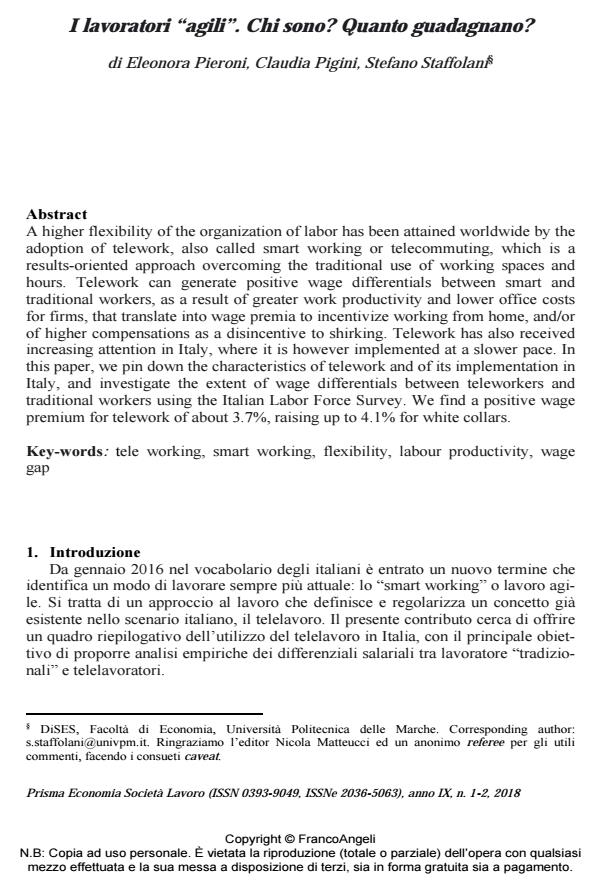I lavoratori "agili". Chi sono? Quanto guadagnano?
Titolo Rivista PRISMA Economia - Società - Lavoro
Autori/Curatori Eleonora Pieroni, Claudia Pigini, Stefano Staffolani
Anno di pubblicazione 2019 Fascicolo 2018/1-2
Lingua Italiano Numero pagine 10 P. 67-76 Dimensione file 208 KB
DOI 10.3280/PRI2018-001005
Il DOI è il codice a barre della proprietà intellettuale: per saperne di più
clicca qui
Qui sotto puoi vedere in anteprima la prima pagina di questo articolo.
Se questo articolo ti interessa, lo puoi acquistare (e scaricare in formato pdf) seguendo le facili indicazioni per acquistare il download credit. Acquista Download Credits per scaricare questo Articolo in formato PDF

FrancoAngeli è membro della Publishers International Linking Association, Inc (PILA)associazione indipendente e non profit per facilitare (attraverso i servizi tecnologici implementati da CrossRef.org) l’accesso degli studiosi ai contenuti digitali nelle pubblicazioni professionali e scientifiche
A higher flexibility of the organization of labor has been attained worldwide by the adoption of telework, also called smart working or telecommuting, which is a results-oriented approach overcoming the traditional use of working spaces and hours. Telework can generate positive wage differentials between smart and traditional workers, as a result of greater work productivity and lower office costs for firms, that translate into wage premia to incentivize working from home, and/or of higher compensations as a disincentive to shirking. Telework has also received increasing attention in Italy, where it is however implemented at a slower pace. In this paper, we pin down the characteristics of telework and of its implementation in Italy, and investigate the extent of wage differentials between teleworkers and traditional workers using the Italian Labor Force Survey. We find a positive wage premium for telework of about 3.7%, raising up to 4.1% for white collars.
Parole chiave:Tele working, smart working, flexibility, labour productivity, wage gap
Eleonora Pieroni, Claudia Pigini, Stefano Staffolani, I lavoratori "agili". Chi sono? Quanto guadagnano? in "PRISMA Economia - Società - Lavoro" 1-2/2018, pp 67-76, DOI: 10.3280/PRI2018-001005